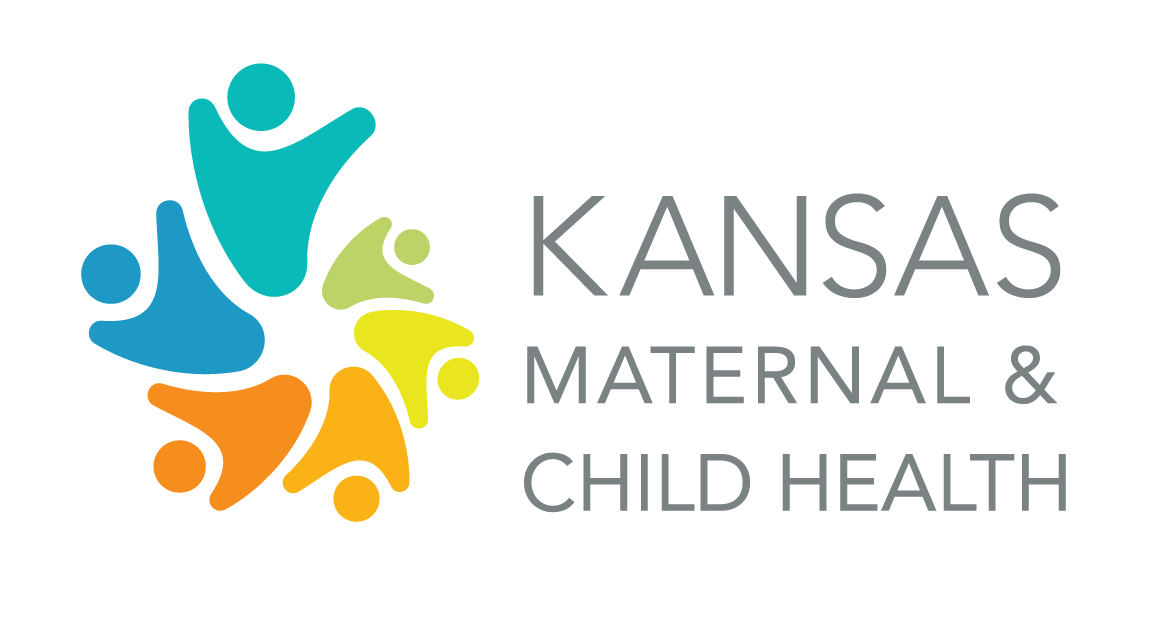Child injury is predictable and preventable.
It is also among the most under-recognized public health problems facing our country today. 2018 Kansas Vital Statistics data shows that unintentional injuries are the leading cause of death for children 1-4 years of age, with most of these injuries being preventable. National data mirrors Kansas data, with the Center for Disease Control (CDC) reporting the leading causes of child injury to include motor vehicle crashes, suffocation, drowning, poisoning, fires, and falls.
Our Role as Educators
With over 9 million children harmed by common accidents each year, it’s clear that providing information surrounding infant and child safety is a crucial component in parent education. By providing parents with resources to assist them in childproofing, as well as information surrounding best practices for safe sleep and car seat use, we can empower parents to take necessary steps towards keeping Kansas babies safe and healthy.
We invite you to share this action alert and resources for baby safety on social media during the month of September. Post the graphics and messages listed below on your personal and organizational platforms to get the word out this Baby Safety Month.
Social Media Graphics and Messages
1. Don't Wait to Babyproof!
Message: There's no better time to babyproof your home than while you're pregnant! Babyproofing your home helps reduce the chances of accidents and keeps your child safe as they begin to explore the world around them. Some easy ways to make your home safer for baby include:
- Install baby gates at the top and bottom of stairwells to prevent the risk of falls
- Test smoke alarms monthly and replace batteries as directed by the manufacturer. Install Carbon Monoxide detectors to prevent poisoning.
- Cover unused electrical sockets with outlet plugs
- Anchor TVs, dressers, and other furniture items to avoid harmful tipping
- Turn down water heaters to 125 degrees or less to prevent burns
- Find a safe storage space for medicines and cleaning supplies
Modified from information found at: https://www.womenshealth.gov/pregnancy/getting-ready-baby/making-your-home-safe-baby
2. Breathe Easy - Avoid Suffocation Risks!
Message: Suffocation is the leading cause of harm to babies and toddlers, but with a little preparation you can breathe easy knowing your baby's risks are reduced.
- Follow Safe Sleep guidlines. Sleeping Alone, on the Back, in a safety-approved Clutter-free Crib protects your baby from risks posed by blanks, pillows, and bumper pads (ABCs of Safe Sleep). Never sleep baby on couches, chairs, or padded adult mattresses.
- Food is fun- when it’s safe! When your baby begins eating after 6 months of age, cutting items into small angular pieces will prevent the risk of choking. This is especially important for foods such as berries, hot dogs, and grapes.
- Keep your cords high, tied, and out of sight. Cords from curtains and blinds should be kept out of reach from children, and cords from electronics and appliances should be bundled to prevent temptation and risks!
- Bag it up. We all have a collection of recycled plastic bagsmake sure that it is out of reach of infants and toddlers. Other bags, such as trash bags and snack bags, should also be kept high and out of sight.
Source: https://kidshealth.org/en/parents/safety-suffocation.html
3. Water Safety is Baby Safety
Message: It only takes a few inches of water to pose a risk to your baby! To avoid the risk of choking or drowning, always stay at arm's length from your child during bath time and playtime- if you need to step away, take baby with you. Pools should be supervised or inaccessible; small inflatable pools should be dumped and stored upside down when not in use, and more permanent pools should be locked behind a gate when not in use. Fish ponds, puddles, and even buckets can also pose a harm to your young child, so be mindful of yard hazards after rain to avoid accidents.
Adapted from: https://kidshealth.org/en/parents/water-safety.html
4. Not-So-Common Sense for Baby
Message: Babies are natural explorers and are constantly seeking out new and exciting things in the home. While this can be a fun, exciting time to introduce them to their home, there are many hidden dangers that can pose a risk for your tiny adventurer. When baby-proofing your home, it can be helpful to kneel or lay on your floors and assess for dangers that aren’t as obvious from adult standing height. Remember to think like a baby and see what might catch your eye- things as simple as houseplants or decorative candles can be harmful and pose a risk to your child, so consider moving these temptations to a higher spot or packing them away for a while. Accidents can happen in the blink of an eye, but with proper preparation, you can help keep your home safer for exploration and play!
Source: https://www.jpma.org/page/baby_safety_month
5. Follow the ABCs of Safe Sleep Guidelines
Message: Most infant suffocation deaths and injuries occur as a result of unsafe sleeping environments. Suffocation risks are predicable and preventable. Sleeping Alone, on the Back, in a safetyapproved Clutter-free Crib protects your baby from risks posed by blankets, pillows, and bumper pads (ABCs of Safe Sleep). Never sleep baby on couches, chairs, or padded adult mattresses.







